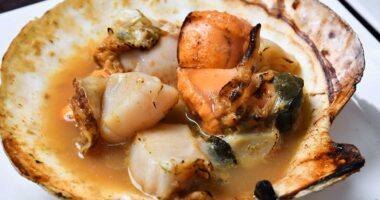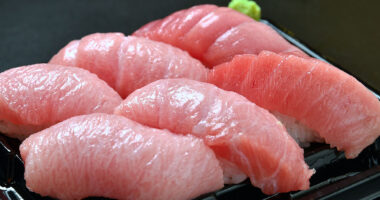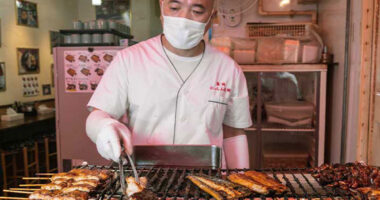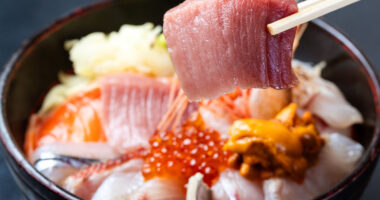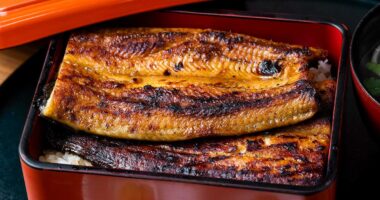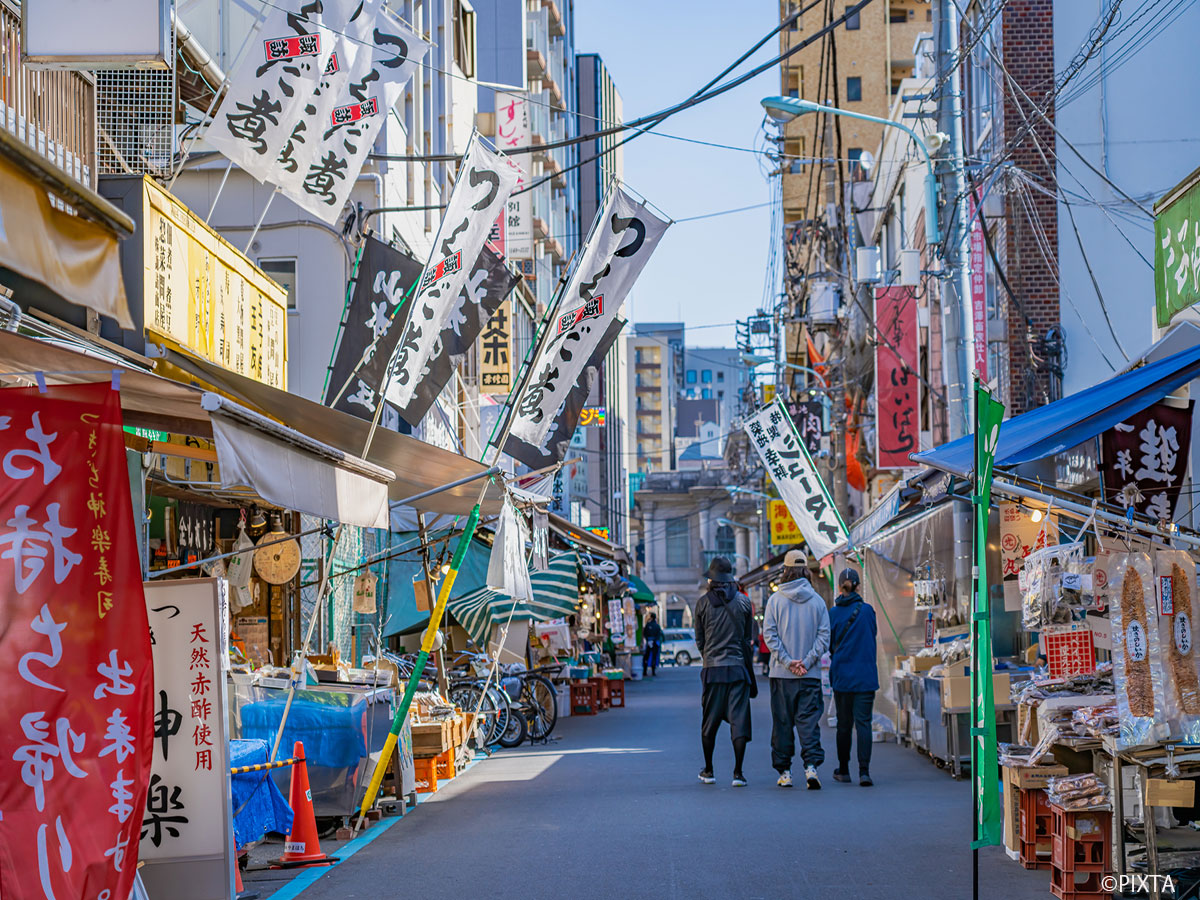Uni, or sea urchin, is considered one of Japan’s three great culinary delicacies.
With its creamy texture, delicate ocean scent, and sweetness that spreads across your palate, it truly deserves its reputation as a luxurious ingredient.
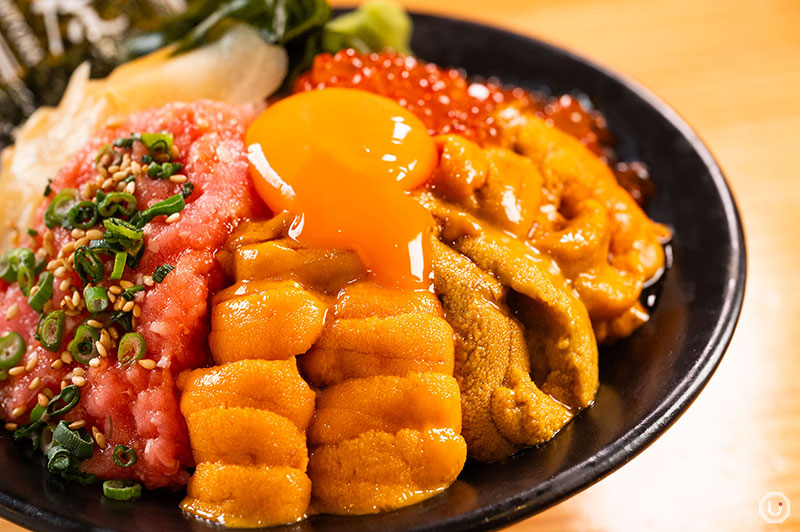
What part of sea urchin is uni?
What exactly is uni? Let’s delve into this ingredient.
What we call “uni” is actually the sea urchin’s reproductive organs that produce either eggs or milt, depending on the sex. When you crack open the spiny shell, you’ll find five clusters that are the edible parts.
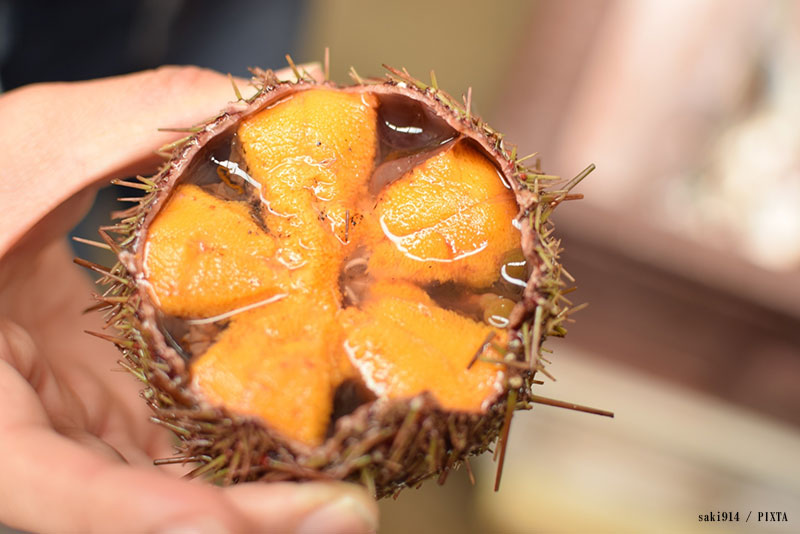
Photo for illustrative purposes
Famous types of uni
Sea urchins live in oceans around the world, with about 180 species found in waters near Japan alone. Of these, only about ten species are consumed, and the most commonly found in markets are bafun uni (green sea urchin) and murasaki uni (purple sea urchin).
Furthermore, there are subtypes depending on the region where the sea urchin is caught. For instance: Ezo-bafun uni (short-spined sea urchin) for bafun uni, and kita-murasaki uni (northern sea urchin) for murasaki uni.
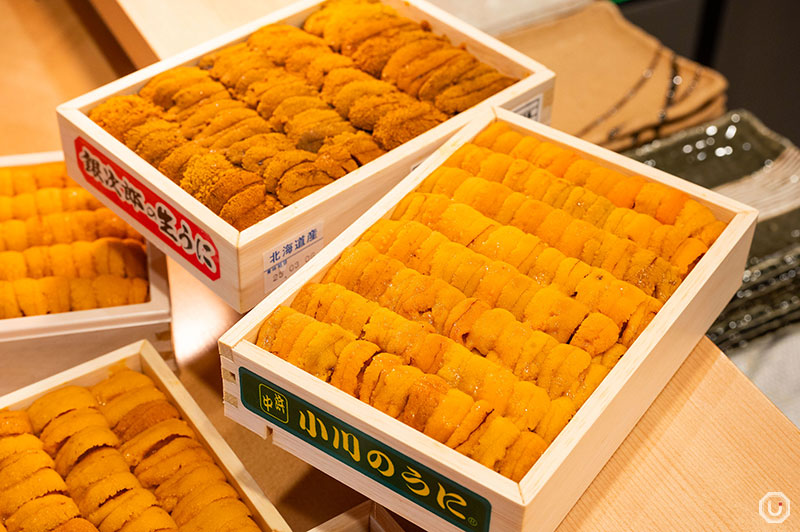
- Bafun ni: A species native to Japan, living from southern Hokkaido to Kyūshū. The edible reproductive organs have a deep orange-like color.
- Murasaki uni: A species that lives from central Honshu to the southern tip of Kyushu. Compared to bafun uni, its reproductive organs are a pale yellow. It’s also sometimes called shiro uni (white sea urchin)
The taste and appeal of uni
Uni is used in various dishes, including sushi, tempura, and pasta. Regardless of how it’s prepared, what remains consistent in uni’s flavor is undoubtedly its sweetness. The milk-like, soft sweetness is a flavor unique to sea urchin among all seafood.
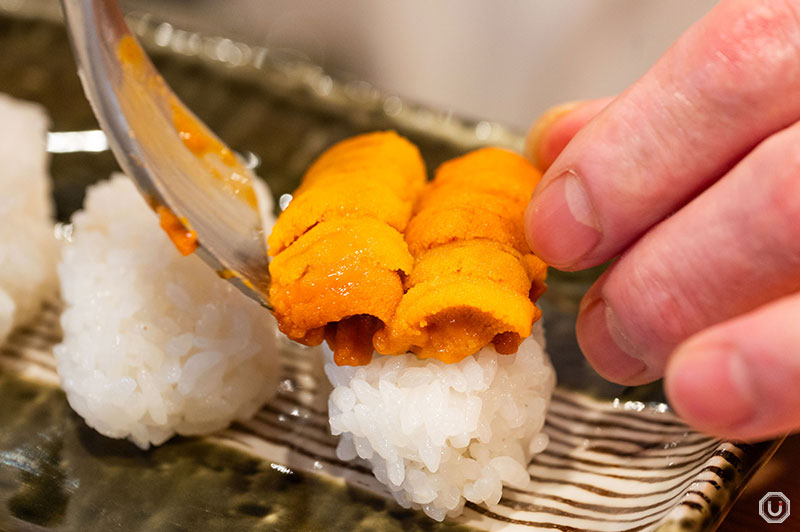
There are also slight differences in taste depending on the type.
When comparing bafun uni and murasaki uni, bafun uni has a more pronounced sweetness. However, this doesn’t mean murasaki uni is bland at all.
Murasaki uni also has a noticeable sweetness, but it’s lighter than bafun uni’s and has a stronger richness.
However, it’s pointless to declare one superior to the other simply based on sweetness. Additionally, the flavor is influenced by the kombu (kelp) that the sea urchins feed on.
Sea urchins, despite their spiky appearance, are quite delicate creatures.
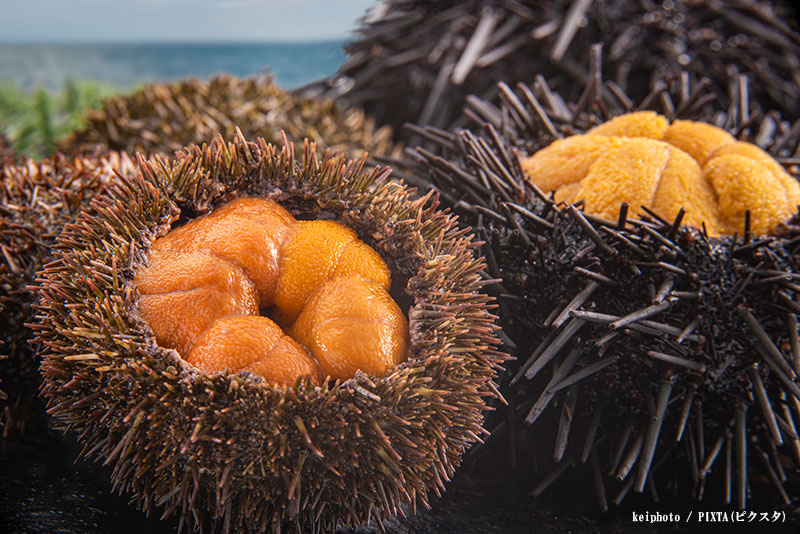
Photo for illustrative purposes
It’s also essential to mention the smooth texture when discussing the appeal of uni. When eaten raw as sashimi, uni almost seems to melt in your mouth. In sushi, the combination of vinegared rice and uni creates an exquisite blend of flavors that’s pure indulgence.
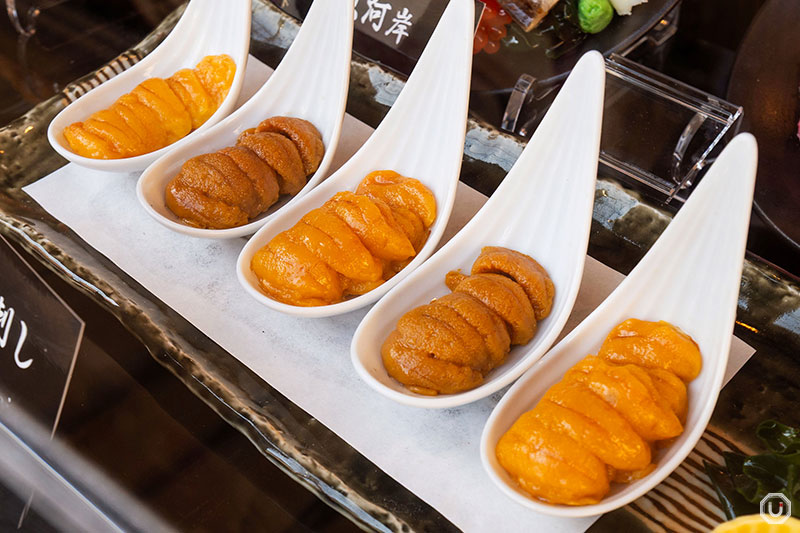
Dishes at “Uni Tora” where you can truly savor the taste of sea urchin
At “Tsukiji Itadori Unitora Nakadōri Ioriten” (hereafter referred to as Uni Tora”), a Tokyo restaurant with multiple locations in the Tsukiji Outer Market, you can savor high-quality uni in various dishes, including sushi, rice bowls, and sashimi.
The restaurant carefully selects the most delicious sea urchin for its peak season, so the quality is first-class. Open from 7:00 AM, this popular restaurant is especially busy during morning and lunchtime hours.
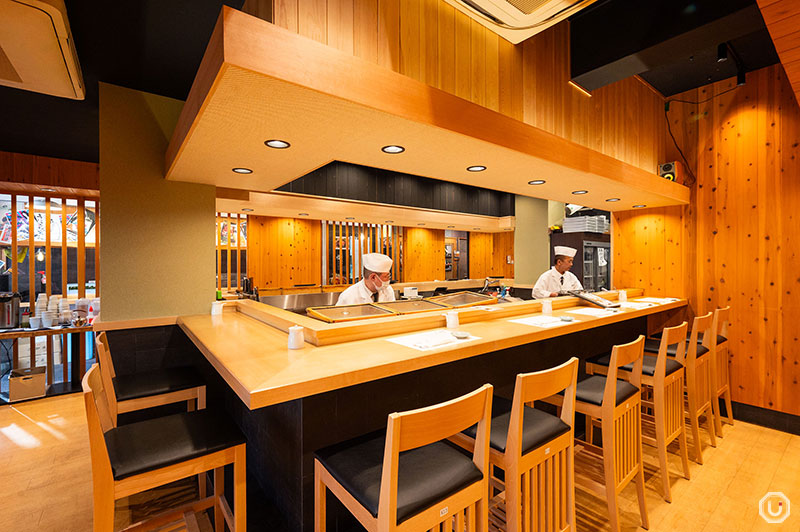
Uni Tora’s interior
Uni sushi: taste-testing Japan’s special sea urchin dish
The first recommendation at Uni Tora is “Uni Nigiri no Miyabi,” which allows you to compare different sea urchins. It uses five different sea urchins from different regions, including both bafun and murasaki varieties.
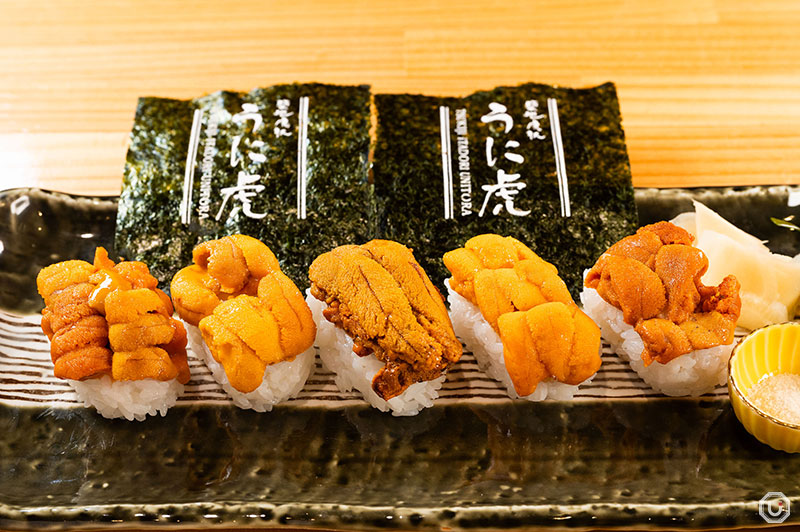
“うにの握り 雅-miyabi-,” Uni Nigiri no Miyabi 11,000 JPY (tax included)
Start by tasting the sushi as it is—just vinegared rice and uni—and enjoy the rich, milky sweetness.
As the vinegared rice melts in your mouth and blends with the uni, you’ll experience an incredibly rich and luxurious flavor.
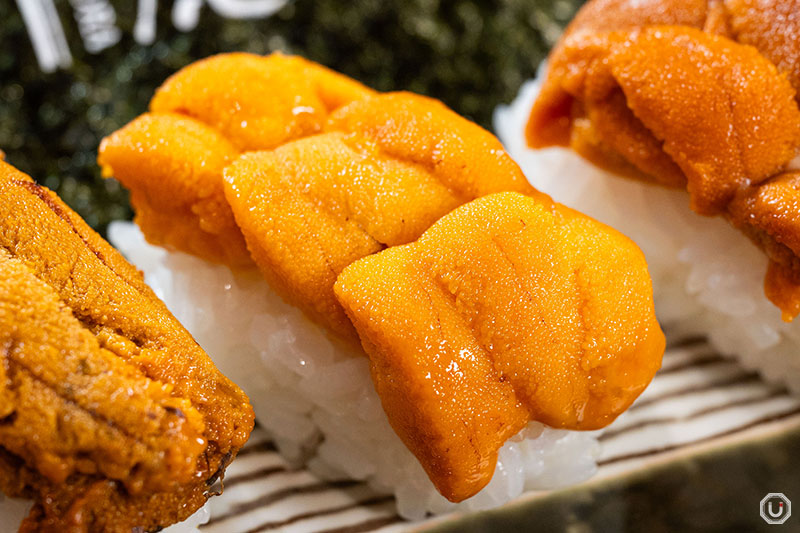
Next, try sprinkling a small pinch of salt over the uni before eating—it might sound surprising, but the salt actually enhances its sweetness, making it even more delicious. Because it’s so fresh, there’s no unpleasant bitterness, and you can fully enjoy the delicious flavor with just the salt as seasoning.
This is the recommended way to enjoy the fresh uni that Uni Tora carefully sources.
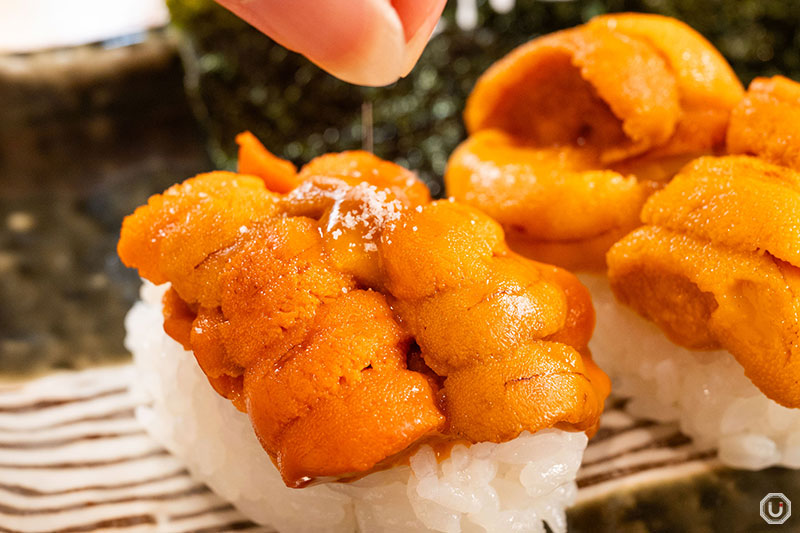
Finally, wrap the sushi in the accompanying nori seaweed. The oceanic flavor of the nori adds an accent, changing the taste of the sea urchin.
The crispy texture of the seaweed combined with the melt-in-your-mouth uni creates a wonderful contrast in texture, making for another delightful flavor.
The sweetness, umami, and aroma harmonize perfectly, creating a bite worthy of fine dining!
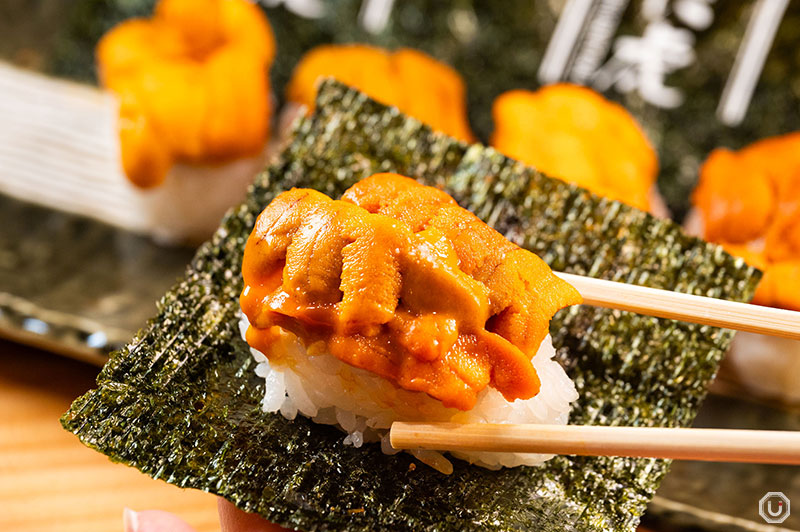
Uni rice bowl: a luxurious bowl using different types of sea urchin
The restaurant’s “Kanade” is a colorful rice bowl topped with several types of sea urchin, nakaochi (medium fatty tuna scraped from the ribs), and ikura (salmon roe).
When you spoon it up, you’ll feel the weight of the generous ingredients. This is another dish that you shouldn’t miss when visiting Uni Tora.

“奏-kanade-,” Kanade 7,200 JPY (tax included)
Pour some soy sauce from the table over it, mix the sea urchin with the egg yolk, and you’ll be amazed by its flavor!
It’s richer than eating uni on its own, yet the aftertaste is not overwhelming. With a texture that lingers on your tongue, it’s a deliciousness you’ll want to savor and appreciate slowly.
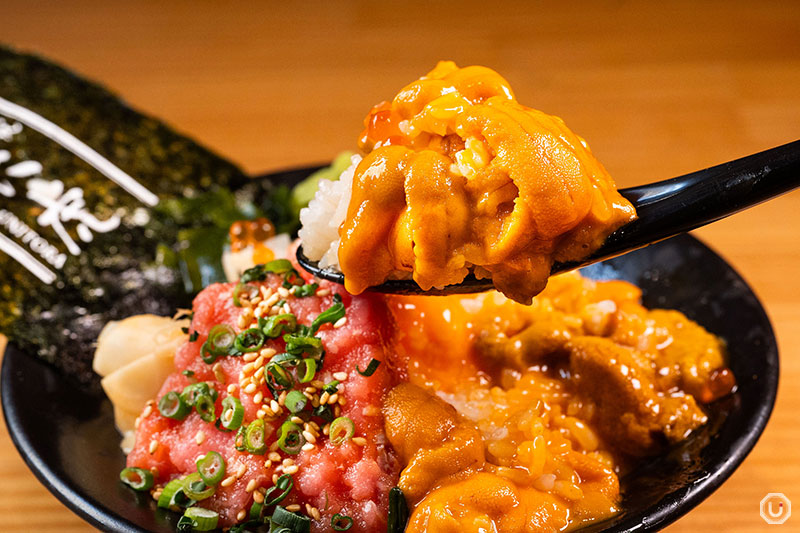
When you take a bite with the fatty nakaochi and salmon roe, the flavor profile changes so dramatically it’s almost as if you’re tasting a different dish.
The subtle saltiness of the salmon roe and the sweetness of the uni are perfectly balanced. Even with wasabi-infused soy sauce, the flavor of the uni remains prominent, which is a testament to its freshness.
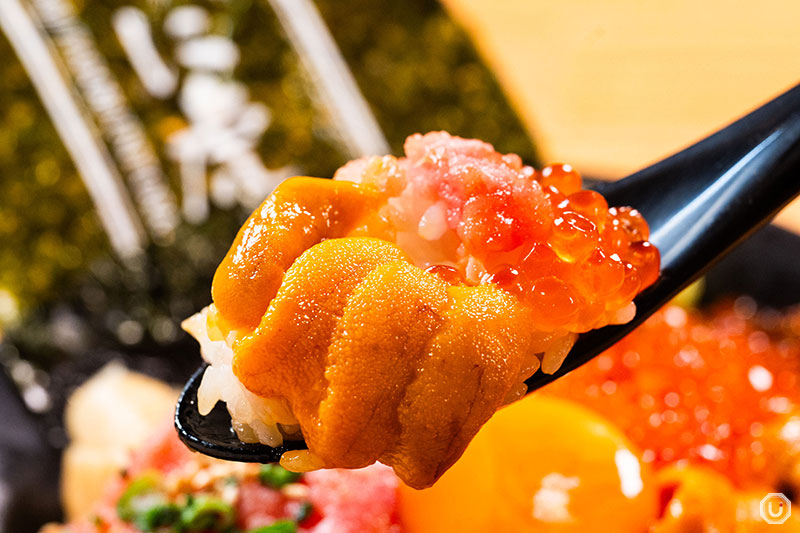
Uni Tora also offers rice bowls topped with ōtoro (fatty tuna), chūtoro (medium-fatty tuna), and akami (lean tuna) sashimi, which are also popular. Enjoy every bite, rich in the umami of seafood.
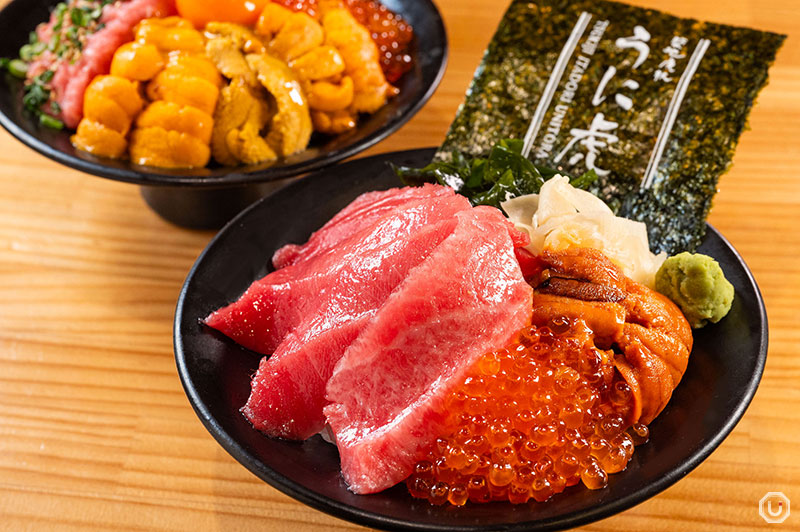
“本鮪とうに·いくら,” Bluefin Tuna, Uni & Ikura Rice Bowl 5,800 JPY (tax included)
While uni can be eaten cooked, it’s best enjoyed raw, as this preserves its true flavors. It’s this freshness and quality that make eating it raw so irresistible.
Fully enjoy uni, one of Japan’s representative seafoods, in Tsukiji, once known as the kitchen of Japan.
Information
| Store name | 築地虎杖 うに虎 中通り 庵店 Tsukiji Itadori Unitora Nakadōri Ioriten |
|---|---|
| Address | 1F MIHIRO Builing, 4-10-5 Tsukiji, Chūō-ku, Tokyo
|
| Access |
Tsukiji Station 4-minute walk from Exit 1
Tsukijishijō Station 4-minute walk from Exit A1
|
| Phone number | 03-6228-4693 |
| Reservations | Not accepted |
| Payment |
|
| Service charge/Table charge | Table charge 300 JPY (tax included) |
| Hours | 7:00-22:00(last order 21:00) |
| Closed | No fixed holidays Unscheduled holidays |
| Seating | 34 seats 18 counter seats, 16 table seats |
| Smoking | All seats are non-smoking |
| Official website | http://harenohi-hd.co.jp/brand01_s05.html |
| Other information |
|
※Menu contents, prices, store information, etc. are current as of March 2025.

